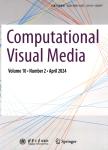Deep residual learning for denoising Monte Carlo renderings
Deep residual learning for denoising Monte Carlo renderings作者机构:ArtixelsHong Kong S.A.R.China Department of Computer Science and Engineeringthe Chinese University of Hong KongHong Kong S.A.R.China
出 版 物:《Computational Visual Media》 (计算可视媒体(英文版))
年 卷 期:2019年第5卷第3期
页 面:239-255页
核心收录:
学科分类:12[管理学] 1201[管理学-管理科学与工程(可授管理学、工学学位)] 08[工学] 081104[工学-模式识别与智能系统] 080203[工学-机械设计及理论] 0835[工学-软件工程] 0802[工学-机械工程] 0811[工学-控制科学与工程] 0812[工学-计算机科学与技术(可授工学、理学学位)]
基 金:supported by the Research Grants Council of the Hong Kong Special Administrative Region under RGC General Research Fund (Project No. CUHK14217516)
主 题:Monte Carlo rendering denoising deep learning deep residual learning filter-free denoising
摘 要:Learning-based techniques have recently been shown to be effective for denoising Monte Carlo rendering methods. However, there remains a quality gap to state-of-the-art handcrafted denoisers. In this paper, we propose a deep residual learning based method that outperforms both state-of-the-art handcrafted denoisers and learning-based *** the indirect nature of existing learning-based methods(which e.g., estimate the parameters and kernel weights of an explicit feature based filter), we directly map the noisy input pixels to the smoothed output. Using this direct mapping formulation, we demonstrate that even a simple-and-standard ResNet and three common auxiliary features(depth, normal,and albedo) are sufficient to achieve high-quality denoising. This minimal requirement on auxiliary data simplifies both training and integration of our method into most production rendering pipelines. We have evaluated our method on unseen images created by a different renderer. Consistently superior quality denoising is obtained in all cases.



